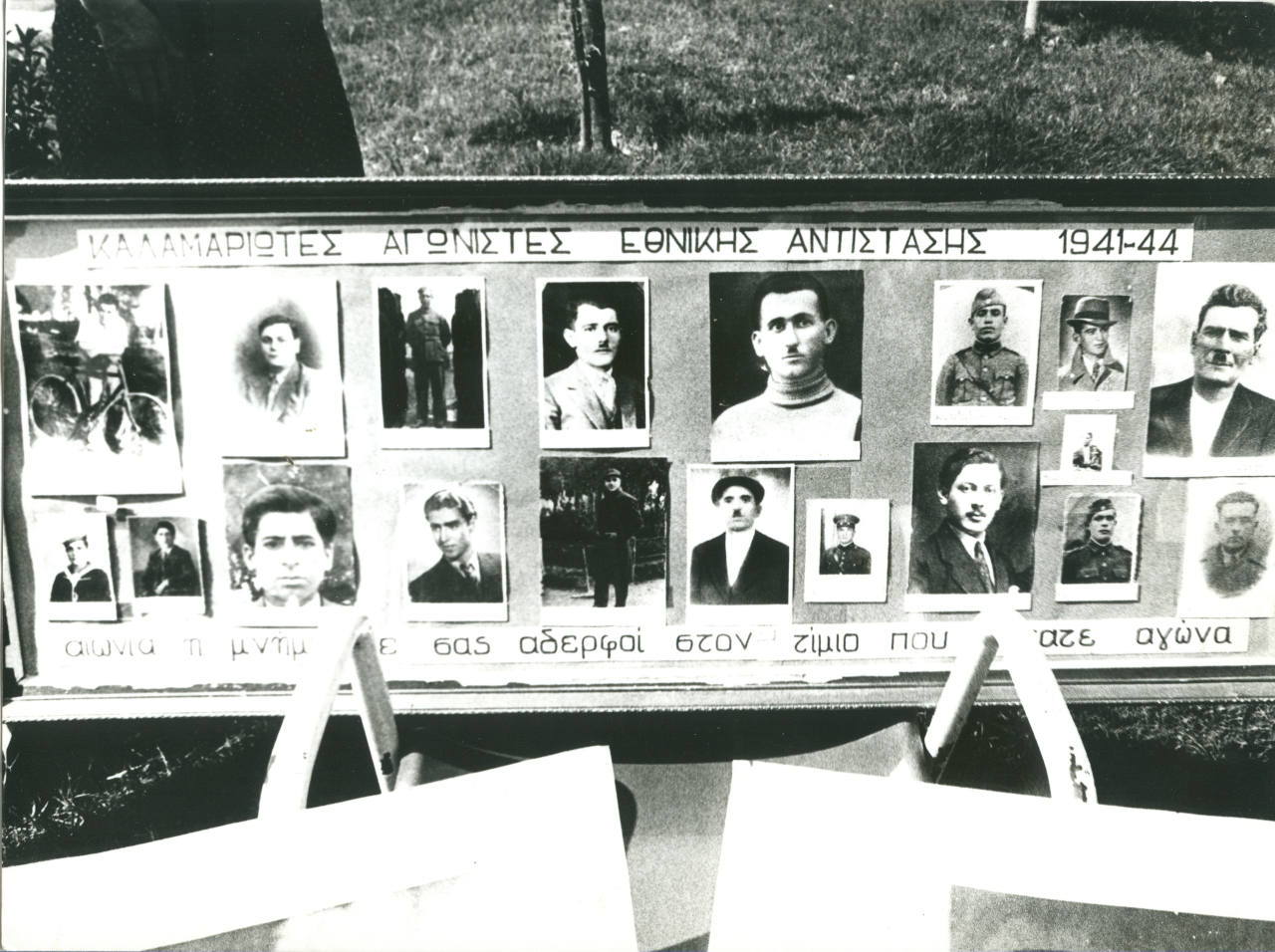Second World War / Occupation
The Second World War disrupted the organisation and development of Kalamaria. Moreover, the settlement was very close to the airport of Mikra and suffered from frequent airstrikes. Nevertheless, on January 1, 1943, the Municipality of Kalamaria was created with the merchant Dimitrios Pavlidis as mayor. The Ministry of Interior had appointed Pavlidis because it was impossible to hold elections during the Occupation. The town hall was installed in rented houses on Xenofontos Street and remained there until 1967. Seven municipal councillors assisted the mayor.
The residents of Kalamaria did not remain indifferent to the effort to liberate the country from the triple occupation of Italians, Germans, and Bulgarians. Many joined EAM, EPON and ELAS, while the activities of the National Resistance fighters in Kalamaria forced the Axis authorities to nickname the settlement “Little Moscow”. Many residents gathered information on German movements, the operation of German military airports, and oil and gas storage facilities. The information was forwarded to Allied Headquarters in the Middle East. The people of Kalamaria who lived in coastal neighbourhoods used their boats and caïques to transport food and ammunition to the guerrillas of Mount Pelion. On the way back, they carried food, oil, olives, coal, and other necessities for the civilians who suffered terrible deprivation and died of starvation in the larger urban centres.
The Roundup of Kalamaria
The participation of the residents of Kalamaria in the Resistance culminated in August 1944 with the execution of Ioannis Velissaridis, a member of the Security Battalions, on Metamorfoseos Street by three members of the Organization for the Protection of the People’s Struggle (abbreviated OPLA in Greek). The occupying authorities reacted with extreme violence. The day after the execution, on the 13th of August, early in the morning, the Germans surrounded the districts of Kouri, Katirli, Aretsou and Derkon, while the battalion of Antonios Dagoulas, who had become notorious in Thessaloniki as a brutal collaborator of the Axis authorities, began a systematic search of properties. There was extensive looting and executions of National Resistance fighters based on a list of suspects. According to the announcement of the Thessaloniki Police Directorate, issued three days later, “on 13 August 1944, from around 4 in the morning until about noon, the entire area of the 11th Kalamaria Police Department was cordoned off by German soldiers. Divisions of local Nationalist Groups conducted a home search and executed the following…”
The result of Dagoula’s criminal activity, who did not miss the opportunity to assist the Nazis, was the execution of eleven civilians. After the operation, the battalion members feasted with skewered lambs and wine. A people’s court that was organised later revealed that the mayor of Kalamaria provided the food and drinks. Pavlidis thought to treat the German collaborators to prevent them from further murders. Indeed, several detainees thus escaped execution. The image of Greek collaborators entertaining themselves while the blood of their compatriots covered the streets a little further away made a very poor impression on the inhabitants of Kalamaria.
The blood of the innocent victims of the roundup of Kalamaria continued to haunt Mayor Pavlidis, who felt remorse for his inability to assist his murdered constituents more decisively. Twenty days later, on September 5, 1944, he submitted his resignation and wrote a letter requesting the resignation of the other mayors: “As a protest for the crimes of the Germans and the national traitors who belong to the Security Battalions, I resign the mayorship of Kalamaria and expect that every mayor of German-occupied Greece will follow my example even at the last minute. It is time, even today, for one to realise his mistakes and join the honest struggle of EAM.”
A monument commemorates the victims of the Roundup and those who lost their lives due to Nazi atrocities in other parts of Kalamaria at different times. The memorial event is held a few days after the anniversary of the tragedy to make it easier for those who want to attend, as most people are away on summer holidays during the week of August 15th.



